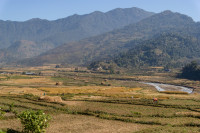Opinion
Ending the cycle of violence
We must work to increase the value of the girl child so that she will be cherished throughout her life
Tomoo Hozumi
On December 19, 2011, the United Nations General Assembly adopted a Resolution to declare October 11 as International Day of the Girl Child to recognise girls’ rights and the unique challenges girls face around the world. Every year since then, a coalition of organisations in Nepal, led by the government, has celebrated this important day. This year, the theme for the International Day of the Girl Child is ‘Empowering Adolescent Girls: Ending the Cycle of Violence’.
In Nepal, there are many reports of domestic violence, rape, sexual violence and abuse, child marriage and dowry-related violence, murder, assault, trafficking, and accusations of witchcraft. Violence against women and girls is rarely a one-off isolated event and often recurs. For young girls, violence experienced during adolescence can determine the trajectory of her life. Physical and sexual violence, discrimination and harmful practices can send young girls down a negative spiral with lifelong consequences, not just for themselves, but for society and future generations.
Hidden violence
Unfortunately, some of the most insidious forms of violence against women like domestic violence, marital rape, and sexual abuse are often viewed as ‘private matters’ and as no one else’s business. In any society, that which is public is often valued and can be shared openly with others—in schools, workplaces, parliaments, and the media. However, that which is private, confined between wife and husband, parents and children, is discussed much less publicly, is deemed of less value and beyond public control and censure. In this way, domestic violence and abuse of girls and women becomes hidden behind closed doors, characterised by shame and secrecy and even internalised by the victims themselves. A 2010 survey in Nepal showed that 48 percent of females think that wife beating can be justified. It is never justified.
Violence against women is not a private family issue or a woman’s issue. It is a public health and human rights issue that affects everyone—not only the victim and perpetrator—but their families, communities, and everyone around them. We must bring this hidden violence into public spaces and debates, speak out, break the silence, and act to eliminate it.
It is important to try to understand what the root cause of violence against girls and women is. What motivates a husband to hit his wife? Why does a male relative sexually abuse a niece or daughter with little fear of punishment? There are many reasons. It may be alcohol and drug abuse, lack of awareness, low reporting of cases of violence, weak law enforcement, and poverty—all are often cited as factors that cause violence. Undoubtedly, these may influence the risk and vulnerability of girls and women to violence. However, poverty alone does not breed violence. Nor does inebriation or illiteracy.
One of the most important causes of gender-based violence is a lack of value and respect for girls and women by men. Gender-based violence is a manifestation of the unequal power relations between the sexes, where men hold more power and control than women. If you respect and value someone as an equal, you do not hit, rape, or abuse that individual. The power imbalance lowers the value of a woman in some people’s eyes, and it is this devaluation and lack of respect for a woman’s dignity and bodily integrity that drives not only physical and sexual violence, but the discrimination and oppression that women may suffer at any point in their lives.
Empowering adolescents
One way to redress the imbalance is to help both adolescent girls and boys develop a sense of mutual respect and valuation through education, life skills development, social support, and knowledge during adolescence. This can be critical in helping to end the cycle of violence before it persists, or even before it begins. If we do not engage boys in this process, then we will be talking to victims or would-be victims and cycles of violence will continue. It is only by working with both girls and boys that the cycle can be broken. Enhanced government and private investment in quality education, health, and social services that protect, respect and fulfil adolescents’ rights, particularly those of adolescent girls, is crucial. Policy and programming that emphasise life and livelihood skills can equip young girls with the skills to make decisions and to take action against any violence that they may experience. Girls have a right to live healthy, productive lives as active citizens in their communities and wider society as a whole.
What we need to put at the heart of International Day of the Girl Child this year is not just an aim to end violence against adolescent girls, but a larger vision: to increase the value of the girl child in Nepal overall so that she will be valued throughout her life. We want all baby girls to be seen by their families as someone to celebrate and to cherish. We want the father of the girl toddler to say, “Give her more food—she is a growing girl.” We need parents to send both their sons and daughters to primary school, secondary school, and for further education, because they should be seen equally as individuals to be helped to grow to their fullest potentials. We should ask men to delay marriage with a girl if she is not yet 18 years old, the legal age for marriage. We should be proud as a community to include and support the young widow. The daughter-in-law must always be treated as a valued and respected member of the family.
Ending violence against adolescent girls and women is just the beginning. Pervasive gender inequality is one of the major challenges that many countries including Nepal need to tackle as a top-most priority. We must act now to address it.
Hozumi is UNICEF Representative to Nepal




 8.12°C Kathmandu
8.12°C Kathmandu










